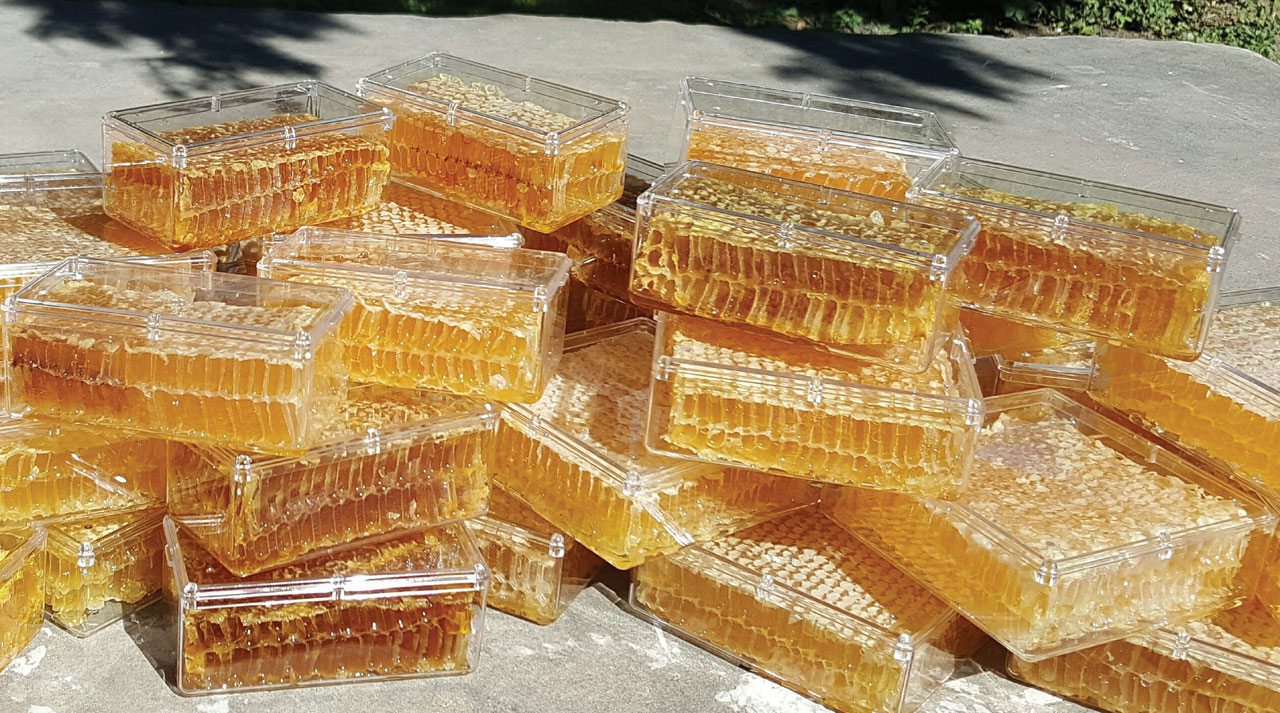Honeycomb is a natural wonder that has fascinated humans for centuries. It is the intricate structure created by bees to store honey and raise their young. It is made up of hexagonal cells that are perfectly aligned to maximize space and efficiency. Honeycomb is not only a marvel of nature, but it is also delicious and nutritious. In this post, we will explore everything you need to know about honeycomb, including its history, uses, benefits, and production.

A Brief History of Honeycomb
Honeycomb has been used by humans for thousands of years. The ancient Egyptians were known to use honeycomb as a form of currency, and it was also used in religious ceremonies. In ancient Greece, honeycomb was highly valued for its medicinal properties and was used to treat a wide range of ailments. The Romans also valued honeycomb, and it was often given as a gift to royalty and dignitaries. Honeycomb has a long and fascinating history that has contributed to its current popularity.
Uses of Honeycomb
Honeycomb has a wide range of uses, from culinary to medicinal. It is a popular ingredient in many recipes and is often used as a natural sweetener. Honeycomb can be eaten on its own or added to tea, yogurt, or oatmeal for a nutritious and delicious treat. It can also be used as a natural remedy for coughs, sore throats, and other respiratory issues. Honeycomb is also used in beauty products, as it is known to have moisturizing and anti-inflammatory properties.
Benefits of Honeycomb
Honeycomb is not only delicious, but it is also highly nutritious. It is rich in vitamins and minerals, including vitamin C, calcium, and iron. It is also a good source of antioxidants, which help to protect the body from damage caused by free radicals. Honeycomb has anti-inflammatory properties, which can help to reduce swelling and pain. It is also known to boost the immune system and promote healthy digestion.
Production of Honeycomb
Honeycomb is produced by bees in the hive. Bees collect nectar from flowers and bring it back to the hive, where it is converted into honey. The bees then store the honey in hexagonal cells made of beeswax, which is produced by the bees. The hexagonal shape of the cells allows for optimal storage and efficiency. Once the honey is stored, the bees cap the cells with wax to keep the honey fresh. The honeycomb is then harvested by beekeepers, who carefully remove it from the hive and prepare it for consumption.
In conclusion, honeycomb is a natural wonder that has a long and fascinating history. It has a wide range of uses, from culinary to medicinal, and is highly nutritious. Honeycomb is produced by bees in the hive, and the hexagonal shape of the cells allows for optimal storage and efficiency. Whether eaten on its own or used as an ingredient in recipes, honeycomb is a delicious and healthy addition to any diet.
Honeycomb is also easy to find in most grocery stores or health food shops. It is often sold in its purest form, comb honey, which comes directly from the hive and is cut from the comb. Comb honey is a popular choice among honey enthusiasts because of its natural taste and texture.
Conclusion
Apart from being used in cooking and as a natural remedy, honeycomb has also found its place in the beauty industry. It is used in a variety of skincare products, as it has moisturizing and anti-inflammatory properties. Honeycomb-based skincare products are known to help soothe dry and irritated skin, reduce the appearance of fine lines and wrinkles, and even out skin tone.
Honeycomb is also used in the production of beeswax candles. These candles are made from beeswax, which is harvested from honeycomb. Beeswax candles are popular among environmentalists because they are a natural and eco-friendly alternative to traditional candles, which often contain harmful chemicals.
Overall, honeycomb is a multipurpose wonder that has been valued by humans for centuries. Its history, uses, benefits, and production make it an interesting topic of discussion. Whether you’re a food enthusiast, a health-conscious individual, or an environmentalist, honeycomb has something to offer.
However, it is important to note that not all honeycomb is created equal. Some honey may contain pesticides or other harmful chemicals, which can have negative effects on your health. It is important to buy honeycomb from a trusted source and to look for organic or raw honey whenever possible.
In conclusion, honeycomb is a fascinating natural wonder that has a wide range of uses and benefits. From cooking to skincare to candles, honeycomb has found its place in many industries. Its rich history and complex production process make it a topic worth exploring, while its health benefits make it a valuable addition to any diet.